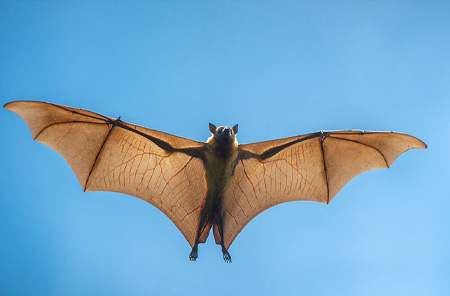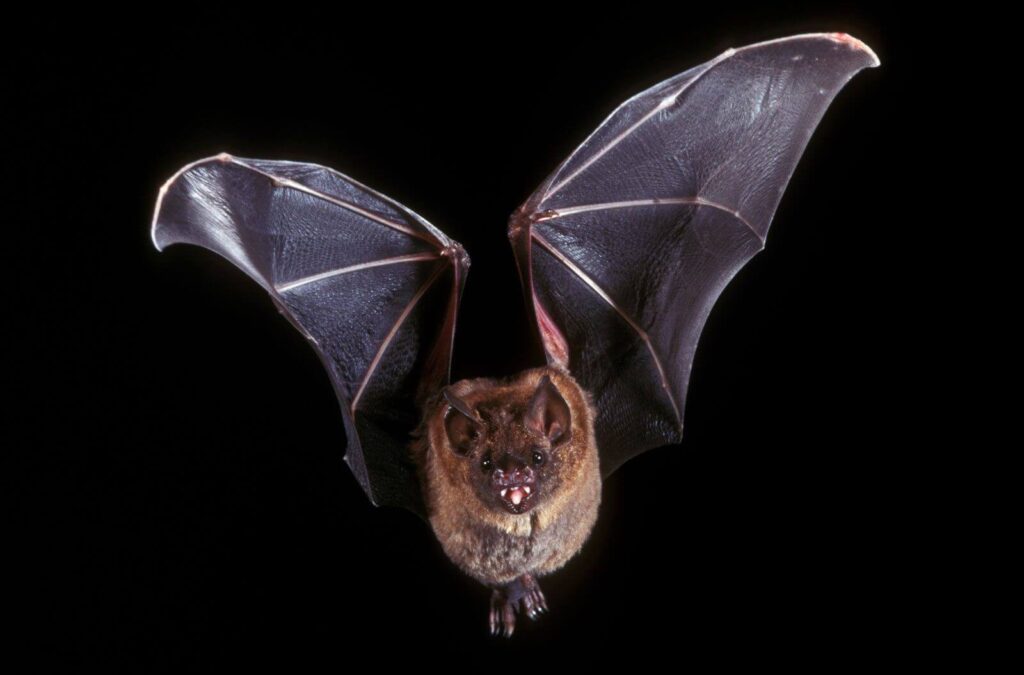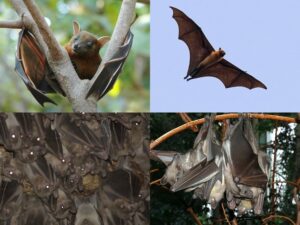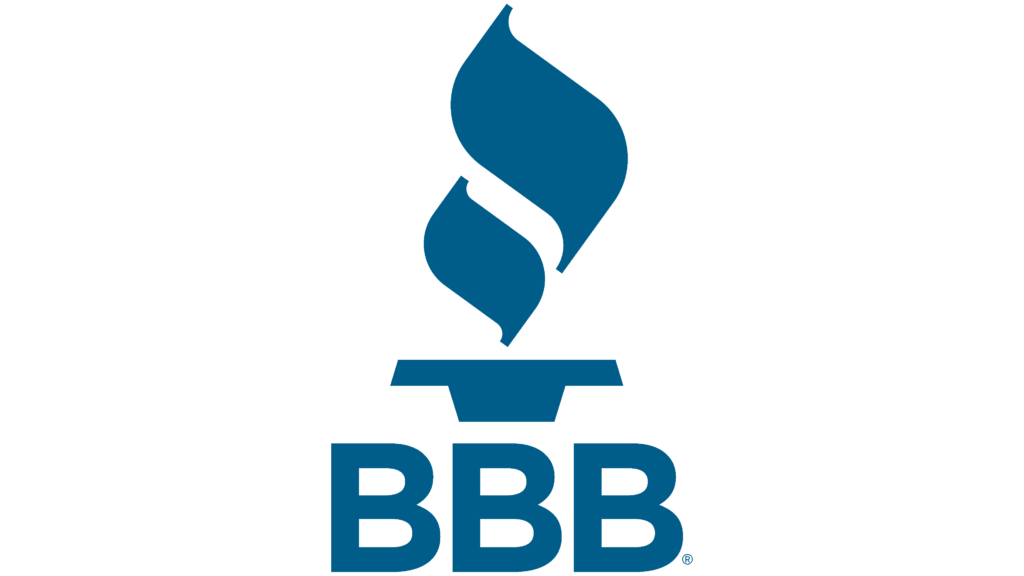Baytown & Baytown Bat Removal - Safe and Humane Solutions

Professional Bat Removal Services in Baytown & Baytown
Got Bats? For expert Baytown, TX bat removal services, call Varmit Busters anytime at (281) 399-2666. Whether it’s a single bat or an entire colony, Animal Control-Wildlife is equipped to help. Bats often hide in hard-to-reach places like attics and can be tricky to handle once caught. Our team provides humane bat removal services, ensuring bats are safely returned to the wild. Prevent Future Bat Problems: After addressing the immediate issue, we offer comprehensive animal-proofing for your home or business to prevent future bat infestations. Enjoy peace of mind with our 3-year warranty on all animal-proofing services.
Conroe's Trusted Bat Removal & Control: 3-Year Warranty!
Our Bat Removal Process:
- Detailed Inspection: Our wildlife specialists identify bat entry points and assess the situation.
- Safe Bat Exclusion: We use humane exclusion methods to remove bats from your property.
- Professional Clean-Up: We remove bat guano and decontaminate affected areas.
The Importance of Bat Removal
While bats benefit the environment, their presence in your home can be hazardous. Bat guano (droppings) can If you suspect bats in your Baytown or Baytown property, contact Animal Control-Wildlife, Inc., Baytown’s leading bat removal company.
- Expert Bat Removal: We safely and humanely remove all bat species using state-of-the-art exclusion methods.
- Complete Bat Control: Our service includes thorough inspections, safe bat removal, and professional clean-up.
- Guaranteed Results: We ensure your property is bat-free and restore your peace of mind.
- 24/7 Emergency Service: We’re available day or night to address your bat problems.
- Safe and Humane Bat Eviction
- Thorough Bat Guano Removal and Decontamination
- Professional Repair of Bat Entry Points
We Service All Conroe Areas, Including:
- Kingwood
- The Woodlands
- Spring
- Atascocita
- The Heights
- Cypress
- Tomball
- And Surrounding Neighborhoods:
- Summerwood
- Fall Creek
- Champions Forest
- Auburn Lakes
- Grogans Mill
- Kings Lake Estates
- Kings River Village
- Waters Edge
- The Groves
- Eagle Springs
Why Choose Us?
- Conroe’s Bat Removal Specialists: We’re local experts with the knowledge and experience to handle any bat situation.
- Guaranteed Bat Removal: Our proven methods ensure complete bat removal from your property.
- 3-Year Warranty: We stand by our work with an industry-leading 3-year warranty for your peace of mind.
- Comprehensive Bat Control: We handle everything, from eviction to cleanup and repairs caused by bats.

Baytown Bat Infestation? Don't Panic, Call the Pros!
Strange Noises or Droppings? You Might Have Bats in Your Baytown Home!
Bats are fascinating creatures, but not when they decide your attic is their new home. Animal Control-Wildlife, Inc. helps Baytown residents identify and safely remove bat infestations.
Signs of a Bat Infestation:
- Bat Droppings (Guano): Look for dark, crumbly droppings around your property, especially attics, eaves, and chimneys.
- Unusual Odors: A strong ammonia-like smell can indicate bat urine or guano buildup.
- Scratching or Squealing Noises: Bats are active at night, so nighttime scratching or squeaking noises coming from your walls or ceiling could be a sign of bats.
- Seeing Bats Entering or Exiting: This is a clear sign of a bat problem.
Baytown Bat Removal: Safe Solutions for a Bat-Free Home

Do Scratching Sounds Haunt Your Nights? Bats in the Attic?
Strange noises in your walls, ceiling, or chimney could indicate unwelcome houseguests: bats. While beneficial to the environment, bats can create problems in your Baytown home.
Why Bats Cause Trouble:
- Noise: Bats are nocturnal, meaning their nighttime activity can disrupt your sleep.
- Health Risks: Bat guano (droppings) can harbor harmful bacteria and diseases.
- Property Damage: Bat guano can damage insulation and building materials, leading to mold growth.
- Unpleasant Odors: Bat urine and guano can cause unpleasant odors around your property.
Don’t Try DIY Bat Removal!
Removing bats and cleaning up guano is a job for professionals. Bats are often protected by wildlife regulations, and improper removal can worsen the problem.
Why Choose Animal Control-Wildlife, Inc.?
- Expert Bat Removal: We use safe and humane methods to remove bats from your Baytown property.
- Complete Bat Control: Our services include bat exclusion, guano removal, and decontamination.
- 3-Year Warranty: We stand by our work, ensuring your home stays bat-free for years to come.
- Licensed & Insured: Our team is qualified and experienced to handle any bat situation.
We Service All Baytown Areas, Including:
- Kingwood
- The Woodlands
- Spring
- Atascocita
- The Heights
- Cypress
- Tomball
- Conroe
- And many more!
We also serve surrounding cities such as:
Our services cover the City of Baytown, Texas, including these ZIP codes: 77520, 77521, 77522, 77523. Additionally, we cater to nearby towns within a 15-mile radius, such as: – **Channelview, TX, Highlands, TX, La Porte, TX** – **Mont Belvieu, TX** – **Wallisville, TX. Aldine, Bellaire, Friendswood, Hedwig Village, Jersey Village, Katy, League City, Mission Bend, Missouri City, Pearland, Richmond, Rosenberg, Sugar Land, Texas City, The Woodlands, Willowbrook, Kingwood, and Atascocita. ### Unsure About Our Service Range? If you’re uncertain whether we cover your area, don’t hesitate to call us! inquiries from the following Texas ZIP codes: – 77494 – 77449 – 78660 – 77084 – 77433 – 79936 – 77573 – 79938 – 75052 – 78245 – 77479 – 78130. Contact Us for More Information.
Call Today for a Free Consultation!
Reclaim your peace of mind with a bat-free home. Contact Animal Control-Wildlife, Inc. at (281) 399-2666 for a free consultation and get a quote for our affordable bat removal services.
We service the entire Baytown metro area, including:
The towns of Aldine, Bellaire, Friendswood, Hedwig Village, Jersey Village, Katy, League City, City of Baytown, TX covers 4 Zip Codes 77520 Zip Code 77521 Zip Code 77522 Zip Code 77523 Zip Code 5 Cities within 15 Miles of the City of Baytown, TX Channelview ,TX Highlands ,TX La Porte ,TX Mont Belvieu, TX Wallisville, TX Mission Bend, Missouri City, Pearland, Richmond, Rosenberg, Sugar Land, Texas City, Baytown, Baytown, Baytown, The Woodlands, Willowbrook, Kingwood, and Atascocita. If you are unsure about our service range, just give us a call! Most Popular ZIP Code Searches in Texas 77494 77449 78660 77084 77433 79936 77573 79938 75052 78245 77479 78130
If you’d like to learn more about specific aspects of bats in like their habitat, behavior, or different bat species, let us know!
Free Consultation
* Indicates required questions

Bat Removal Baytown | Bat Control and Removal Services
Here's some interesting information about bats!
• Mammals, not birds: Bats in Baytown are the only mammals with true flight. Their wings are formed by a thin membrane of skin stretching between their elongated fingers and body. Bat infestations are not unusual, and, like other pest control issues are the responsibility of the home or property owner. BARC and other City of Baytown
• Echolocation masters: Unlike birds in Baytown that rely on sight, bats navigate and hunt using echolocation. They emit high-frequency squeaks and interpret the echoes bouncing off objects to form a “picture” of their surroundings.
• Incredibly diverse: There are over 1,400 species of bats worldwide, making up about one-quarter of all mammal species! They range in size from the tiny Kitti’s hog-nosed bat, weighing less than a penny, to the giant flying foxes with wingspans of up to 6 feet.
• Mostly insectivores: The majority of bats in Baytown are insectivores consuming vast quantities of insects each night. This helps control insect populations and reduces the need for pesticides.
• Pollinators and seed dispersers: Some bat species play a vital role in plant pollination, similar to bees and hummingbirds. Others help disperse seeds by eating fruit and dropping the seeds in new areas as they fly.
• Hibernation experts: In colder climates, bats hibernate during winter months to conserve energy. They lower their body temperature and heart rate, living off fat reserves stored during warmer months.
• Guano power: Bat guano, their droppings, is a rich source of nitrogen and other nutrients. It was once a valuable fertilizer and is still used in organic gardening today.
• Facing threats: Unfortunately, bat populations in Baytown are facing threats like habitat loss, pesticide use, and white-nose syndrome, a deadly fungal disease. Conservation efforts are underway to protect these fascinating creatures.
Most common type of bats

While there’s no single “most common” type of bat globally, due to the vast diversity of bat species, there are two main groups that dominate in terms of population numbers:
• Microchiroptera (Micro bats): This suborder makes up the vast majority of bat species, estimated at around 80% of all bats. They are typically smaller in size, known for their echolocation abilities, and primarily insectivores. Common examples include:
o Myotis bats (Mouse-eared bats): This is a very diverse genus with hundreds of species worldwide, found in a variety of habitats.
o Vespertilionidae (Vesper bats): Another large and widespread family with insectivorous bats. The common pipistrelle bat (Pipistrellus pipistrellus) found in Europe is an example.
o Molossidae (Free-tailed bats): This family includes some of the fastest flying bats, with species like the Mexican free-tailed bat (Tadarida brasiliensis) found in North America.
• Megachiroptera (Megabats): This suborder, also known as fruit bats or flying foxes, makes up the remaining 20% of bat species. They are generally larger than microbats, with poor eyesight relying more on smell and echolocation for navigation. Most are frugivorous, feeding on fruits and nectar. Common examples include:
o Pteropodidae (Old World fruit bats): This family includes the giant flying foxes, the largest bats by wingspan, found in Africa, Asia, and Australia.
o Cynopteridae (Old World fruit bats): Another diverse family with fruit-eating bats in Africa and Asia.
So, depending on your location, the most common type of bat you’d encounter would likely be a microbat species like a Myotis bat or a free-tailed bat. However, megabats are also quite successful and numerous in their specific ecological niches.
So, depending on your location, the most common type of bat you’d encounter would likely be a microbat species like a Myotis bat or a free-tailed bat. However, megabats are also quite successful and numerous in their specific ecological niches.
We service the entire Baytown metro area, including:
The towns of Aldine, Bellaire, Friendswood, Hedwig Village, Jersey Village, Katy, League City, City of Baytown, TX covers 4 Zip Codes 77520 Zip Code 77521 Zip Code 77522 Zip Code 77523 Zip Code 5 Cities within 15 Miles of the City of Baytown, TX Channelview ,TX Highlands ,TX La Porte ,TX Mont Belvieu, TX Wallisville, TX Mission Bend, Missouri City, Pearland, Richmond, Rosenberg, Sugar Land, Texas City, Baytown, Baytown, Baytown, The Woodlands, Willowbrook, Kingwood, and Atascocita. If you are unsure about our service range, just give us a call! Most Popular ZIP Code Searches in Texas 77494 77449 78660 77084 77433 79936 77573 79938 75052 78245 77479 78130
If you’d like to learn more about specific aspects of bats in like their habitat, behavior, or different bat species, let us know!
Honey bees are crucial for plant pollination, but did you know they are not native to the Americas? Originating from Europe, Asia, and Africa, these bees were first introduced to Virginia in 1621 by early pioneers who relied on honey as a primary sweetener. Over time, honey bees have spread across North America. These remarkable insects have five senses similar to ours and communicate in fascinating ways. They commonly establish their hives within trees, houses, or buildings.Honey bees are crucial for plant pollination, but did you know they are not native to the Americas? Originating from Europe, Asia, and Africa, these bees were first introduced to Virginia in 1621 by early pioneers who relied on honey as a primary sweetener. Over time, honey bees have spread across North America. These remarkable insects have five senses similar to ours and communicate in fascinating ways. They commonly establish their hives within trees, houses, or buildings.Honey bees are crucial for plant pollination, but did you know they are not native to the Americas? Originating from Europe, Asia, and Africa, these bees were first introduced to Virginia in 1621 by early pioneers who relied on honey as a primary sweetener. Over time, honey bees have spread across North America. These remarkable insects have five senses similar to ours and communicate in fascinating ways. They commonly establish their hives within trees, houses, or buildings.Honey bees are crucial for plant pollination, but did you know they are not native to the Americas? Originating from Europe, Asia, and Africa, these bees were first introduced to Virginia in 1621 by early pioneers who relied on honey as a primary sweetener. Over time, honey bees have spread across North America. These remarkable insects have five senses similar to ours and communicate in fascinating ways. They commonly establish their hives within trees, houses, or buildings.Honey bees are crucial for plant pollination, but did you know they are not native to the Americas? Originating from Europe, Asia, and Africa, these bees were first introduced to Virginia in 1621 by early pioneers who relied on honey as a primary sweetener. Over time, honey bees have spread across North America. These remarkable insects have five senses similar to ours and communicate in fascinating ways. They commonly establish their hives within trees, houses, or buildings.Honey bees are crucial for plant pollination, but did you know they are not native to the Americas? Originating from Europe, Asia, and Africa, these bees were first introduced to Virginia in 1621 by early pioneers who relied on honey as a primary sweetener. Over time, honey bees have spread across North America. These remarkable insects have five senses similar to ours and communicate in fascinating ways. They commonly establish their hives within trees, houses, or buildings.Honey bees are crucial for plant pollination, but did you know they are not native to the Americas? Originating from Europe, Asia, and Africa, these bees were first introduced to Virginia in 1621 by early pioneers who relied on honey as a primary sweetener. Over time, honey bees have spread across North America. These remarkable insects have five senses similar to ours and communicate in fascinating ways. They commonly establish their hives within trees, houses, or buildings.Honey bees are crucial for plant pollination, but did you know they are not native to the Americas? Originating from Europe, Asia, and Africa, these bees were first introduced to Virginia in 1621 by early pioneers who relied on honey as a primary sweetener. Over time, honey bees have spread across North America. These remarkable insects have five senses similar to ours and communicate in fascinating ways. They commonly establish their hives within trees, houses, or buildings.
Honey bees are crucial for plant pollination, but did you know they are not native to the Americas? Originating from Europe, Asia, and Africa, these bees were first introduced to Virginia in 1621 by early pioneers who relied on honey as a primary sweetener. Over time, honey bees have spread across North America. These remarkable insects have five senses similar to ours and communicate in fascinating ways. They commonly establish their hives within trees, houses, or buildings.Honey bees are crucial for plant pollination, but did you know they are not native to the Americas? Originating from Europe, Asia, and Africa, these bees were first introduced to Virginia in 1621 by early pioneers who relied on honey as a primary sweetener. Over time, honey bees have spread across North America. These remarkable insects have five senses similar to ours and communicate in fascinating ways. They commonly establish their hives within trees, houses, or buildings.Honey bees are crucial for plant pollination, but did you know they are not native to the Americas? Originating from Europe, Asia, and Africa, these bees were first introduced to Virginia in 1621 by early pioneers who relied on honey as a primary sweetener. Over time, honey bees have spread across North America. These remarkable insects have five senses similar to ours and communicate in fascinating ways. They commonly establish their hives within trees, houses, or buildings.Honey bees are crucial for plant pollination, but did you know they are not native to the Americas? Originating from Europe, Asia, and Africa, these bees were first introduced to Virginia in 1621 by early pioneers who relied on honey as a primary sweetener. Over time, honey bees have spread across North America. These remarkable insects have five senses similar to ours and communicate in fascinating ways. They commonly establish their hives within trees, houses, or buildings.Honey bees are crucial for plant pollination, but did you know they are not native to the Americas? Originating from Europe, Asia, and Africa, these bees were first introduced to Virginia in 1621 by early pioneers who relied on honey as a primary sweetener. Over time, honey bees have spread across North America. These remarkable insects have five senses similar to ours and communicate in fascinating ways. They commonly establish their hives within trees, houses, or buildings.Honey bees are crucial for plant pollination, but did you know they are not native to the Americas? Originating from Europe, Asia, and Africa, these bees were first introduced to Virginia in 1621 by early pioneers who relied on honey as a primary sweetener. Over time, honey bees have spread across North America. These remarkable insects have five senses similar to ours and communicate in fascinating ways. They commonly establish their hives within trees, houses, or buildings.Honey bees are crucial for plant pollination, but did you know they are not native to the Americas? Originating from Europe, Asia, and Africa, these bees were first introduced to Virginia in 1621 by early pioneers who relied on honey as a primary sweetener. Over time, honey bees have spread across North America. These remarkable insects have five senses similar to ours and communicate in fascinating ways. They commonly establish their hives within trees, houses, or buildings.Honey bees are crucial for plant pollination, but did you know they are not native to the Americas? Originating from Europe, Asia, and Africa, these bees were first introduced to Virginia in 1621 by early pioneers who relied on honey as a primary sweetener. Over time, honey bees have spread across North America. These remarkable insects have five senses similar to ours and communicate in fascinating ways. They commonly establish their hives within trees, houses, or buildings.

